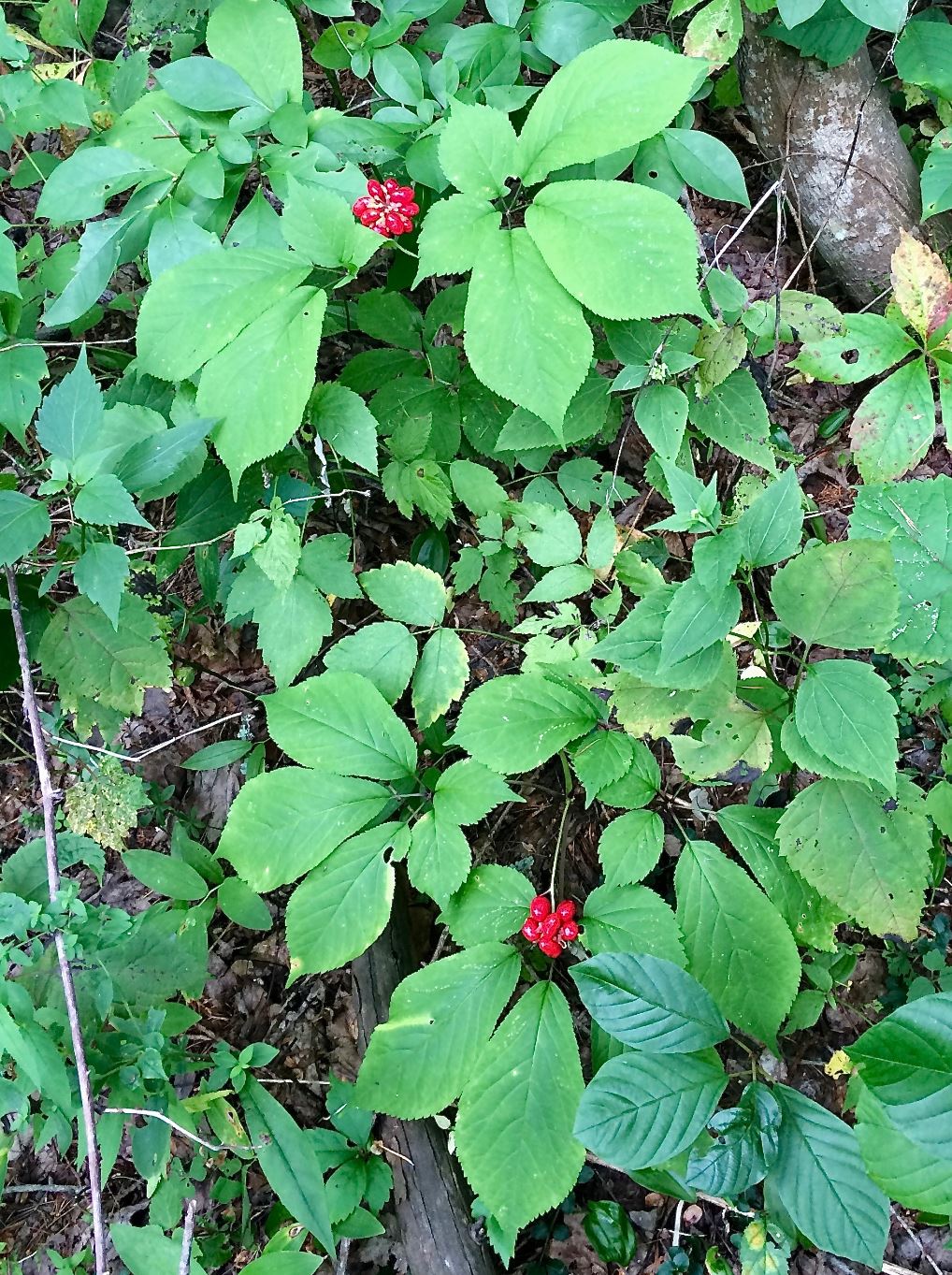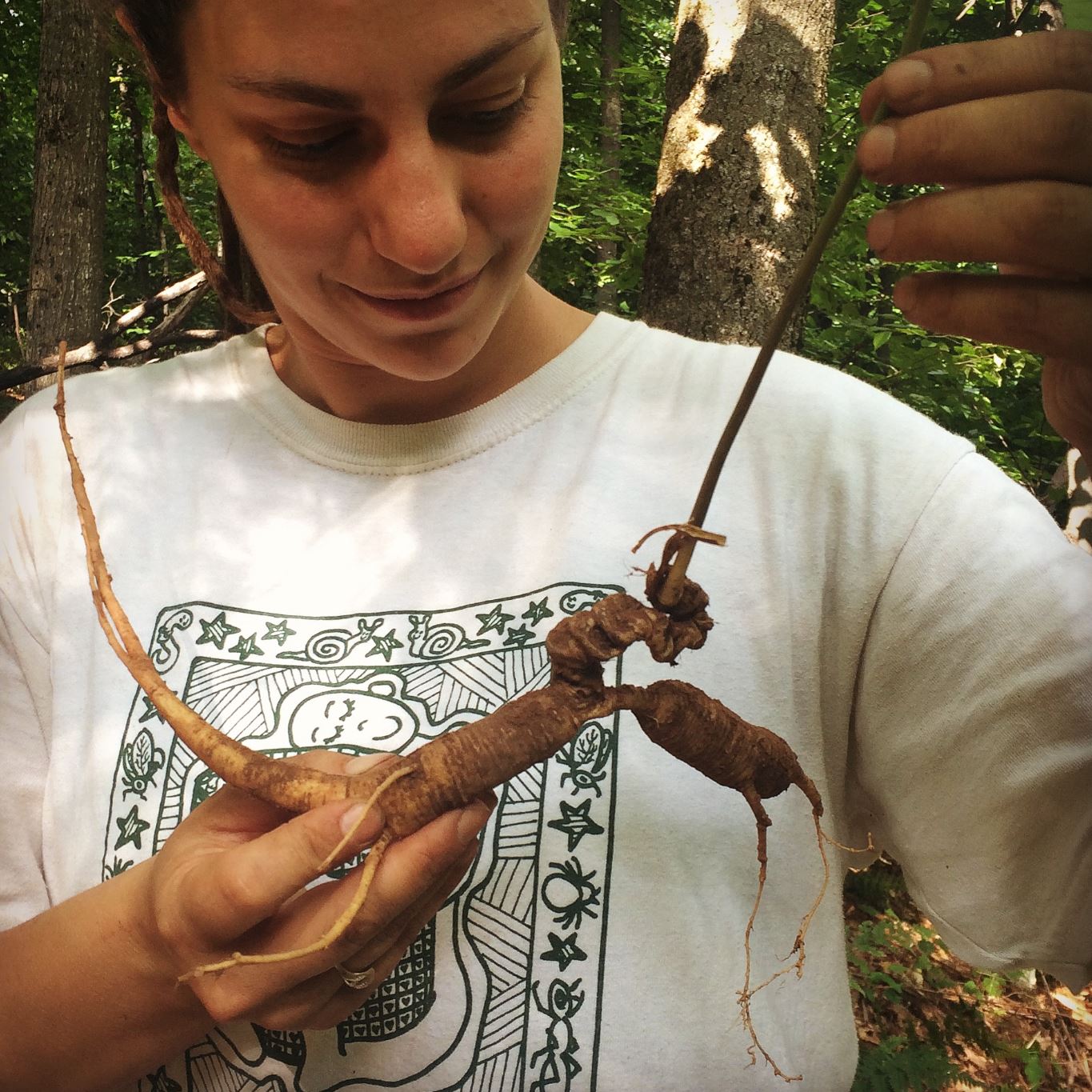American ginseng (Panax quinquefolius) is arguably the most valuable non-timber forest crop in Eastern North America. For three hundred years, this native understory herb has been harvested and sold to East Asia for use as medicine. As wild American ginseng plants do not replace themselves until they have reached an average age of ten years or older (McGraw 2017), centuries of harvest have left us with fragmented wild populations. Today, the vast majority of American ginseng on the market is cultivated in farm fields under shade cloth or in tilled garden beds underneath the shade of a forest canopy. However, this high-density production is unnatural and stressful for ginseng, resulting in outbreaks of fungal pathogens that kill the plants. Even with regular applications of fungicides and pesticides, plants rarely survive more than a few years, and the subsequent organic value of the ginseng root is then compromised.

Wild-simulated ginseng production is the practice of planting ginseng where it will thrive on its own: in the forests where wild ginseng naturally grows. This is not a new concept. People have been stewarding wild populations and replanting ripe berries for centuries. In fact, seed from field-grown operations has been for sale to the public since at least the late 19th century, when field-grown production became widespread (Figure 2).
 Figure 2. Brandt Ginseng Booklet, 1908. Courtesy of Bob Beyfuss.
Figure 2. Brandt Ginseng Booklet, 1908. Courtesy of Bob Beyfuss.
However, the cultivation of wild-simulated ginseng has generally remained small scale, providing a source of side income. Growing wild-simulated ginseng is risky and requires a large capital investment with no return for almost a decade. Even in ideal growing conditions with healthy, viable seed, plants are susceptible to a myriad of diseases and subject to the risk of theft. They are also vulnerable to the dangers that naturally affect wild populations, such as drought and predation from deer, rodents, turkeys, and slugs. The investment can easily be over $10,000 per half acre of production (Davis and Persons 2014).
While these factors have restricted the development of commercial wild-simulated production, the wild-simulated technique is the only method in which ginseng plants can be cultivated with organic standards over their entire lifespan. Additionally, wild-simulated roots have the distinctly wrinkled, gnarly appearance of wild ginseng because the soil is not tilled or amended. This fetches the highest prices on the market. Wild-simulated production also reduces harvest pressure on wild populations by offering an alternative that is more reliable and sustainable than wild collection (Burkhart 2011). It allows landowners to produce income from forested land while protecting mature forests from continuous logging, and it provides a much-needed supply of sustainably grown organic medicine for the domestic and international markets. All these opportunities are possible while sustaining an American tradition dating back three hundred years. The potential is enormous.

 Figure 4. Catskill Mountain ginseng forest in preparation for planting. Photo by Justin Wexler.
Figure 4. Catskill Mountain ginseng forest in preparation for planting. Photo by Justin Wexler.
 Figure 5. Wild-simulated ginseng plants of various ages, growing among native companion plants. Photo by Anna Plattner.
Figure 5. Wild-simulated ginseng plants of various ages, growing among native companion plants. Photo by Anna Plattner.
American Ginseng Pharm has taken on the challenge. With the help of ginseng expert Bob Beyfuss, we planted our first ginseng seeds in 2012. We are based in the Catskill Mountains of New York State, where we now have over 200 acres of wild-simulated ginseng planted across nearly one thousand acres of both leased and owned land. During our first few years, we experimented with various growing methods, streamlined production costs, and managed hurdles as they arose. We have now begun harvesting our first ginseng, enabling us to further analyze and study the success of our different techniques.
We work closely with other ginseng farmers, researchers, and conservationists, sharing and learning from one another. In 2019, we partnered with Karam Sheban, a graduate student at Yale University, to organize a SARE research project to quantify the importance of the different environmental factors on plantings of wild-simulated American ginseng. The results of this study will be directly applicable to forest farmers (see https://projects.sare.org/sare_project/gne19-221).
We aim to pave the way for others to join us in this unique type of forest farming. If you are interested in learning more or getting in touch, contact Anna at This email address is being protected from spambots. You need JavaScript enabled to view it., or check out our website at Americanginsengpharm.com. You can also find American Ginseng Pharm on Facebook and Instagram @ginsengandbeyond.
References:
Burkhart EP (2011) “Conservation through cultivation:” economic, socio-political and ecological considerations regarding the adoption of ginseng forest farming in Pennsylvania. PhD dissertation, Forest Resources, the Pennsylvania State University, University Park
Davis JM, Person WS (2014) Growing and marketing ginseng, goldenseal and other woodland medicinals, 2nd edn. New Society Press, Gabriola Island
McGraw J (2017) Taking the broad view: How are wild ginseng populations faring and when does conservation policy need to change? In: Ormsby A, Leopold S (eds), The future of ginseng and forest botanicals symposium proceedings, pp. 90-102.

